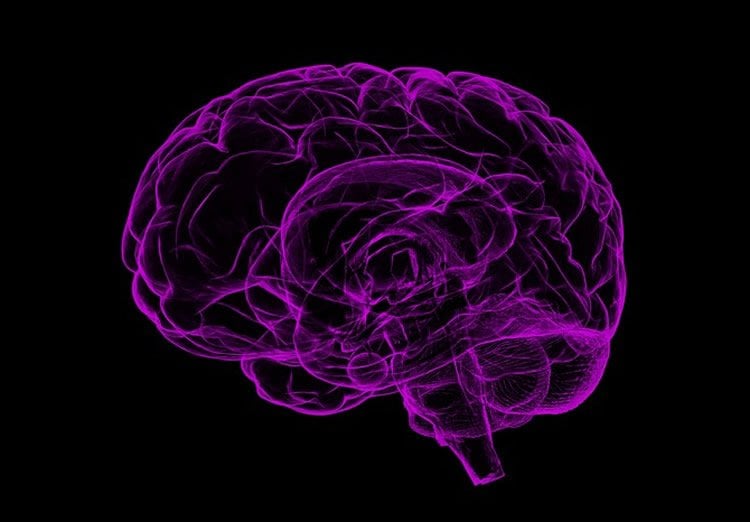Summary: According to a Frontiers in Psychology study, binge drinking in teens is associated with a reduction in brain areas that play key roles in memory, learning, language and attention.
Source: Frontiers.
Heavy alcohol use or binge drinking during adolescence and young adulthood, alter brain structures and function, leading to reduced cognitive abilities and increased risk for developing alcohol use disorder.
What would a celebration be without alcohol, whether we are talking about a private or professional event? Drinking alcohol, is a well-engrained and long-standing social habit in many countries around the world, even though the fact that alcohol has an impact on one’s health is largely established, especially when it comes to heavy drinking. In particular, adolescents are known to enjoy their drinking games and nights-out without worrying much about the effects alcohol can have on their health. In fact, drinking in high quantities is common during adolescence with nearly 25% of high school seniors in the US reporting that they got drunk in the last 30 days.
The effects of heavy drinking among young people on the brain have been looked at closely in a mini review published in Frontiers in Psychology by Anita Cservenka, Assistant Professor at Oregon State University et.al.
“Adolescence is a time when the brain still matures including not only biological development but also maturation of psychosocial behaviours. Given the increase of binge and heavy drinking in young people, understanding the effects of consuming large quantities of alcohol on neural development and the impact on cognitive skills is very important” says Assistant Professor Cservenka.
Binge or heavy episodic drinking means four or more standard drinks within a two-hour drinking session for females, five or more drinks for males. The review highlights existing research that examines the harmful effects of such drinking habits with a view to inform future studies.

“We looked at six areas to determine the deleterious impact of heavy drinking on brain response, namely: response inhibition, working memory, verbal learning and memory, decision making and reward processing, alcohol cue reactivity, and socio-cognitive/socio-emotional processing” explains Assistant Professor Cservenka.
The review establishes that binge drinking among young people is associated with a thinning or reduction of areas of the brain that play a key role in memory, attention, language, awareness and consciousness, which include cortical and subcortical structures. Taking learning and memory as an example, studies have shown that heavy drinking leads to a deficit in the ability of young people to learn novel words, which has been linked to changes in brain activity.
Looking to the future, “these brain alterations, as a result of heavy alcohol use during adolescence and young adulthood, could result in increased risk of developing an alcohol use disorder later on in life. It is therefore important to continue raising awareness of the risks of binge drinking and to promote future research in this area. Our review provides a useful basis to determine the areas that require further attention.” concludes Assistant Professor Cservenka.
Source: Melissa Cochrane – Frontiers
Image Source: NeuroscienceNews.com image is in the public domain.
Original Research: Full open access research for “The Burden of Binge and Heavy Drinking on the Brain: Effects on Adolescent and Young Adult Neural Structure and Function” by Anita Cservenka and Ty Brumback in Frontiers in Psychology. Published online June 30 2017 doi:10.3389/fpsyg.2017.01111
[cbtabs][cbtab title=”MLA”]Frontiers “Heavy Drinking During Adolescence Has Dire Effects on the Brain.” NeuroscienceNews. NeuroscienceNews, 18 July 2017.
<https://neurosciencenews.com/teen-alcohol-brain-7119/>.[/cbtab][cbtab title=”APA”]Frontiers (2017, July 18). Heavy Drinking During Adolescence Has Dire Effects on the Brain. NeuroscienceNew. Retrieved July 18, 2017 from https://neurosciencenews.com/teen-alcohol-brain-7119/[/cbtab][cbtab title=”Chicago”]Frontiers “Heavy Drinking During Adolescence Has Dire Effects on the Brain.” https://neurosciencenews.com/teen-alcohol-brain-7119/ (accessed July 18, 2017).[/cbtab][/cbtabs]
Abstract
The Burden of Binge and Heavy Drinking on the Brain: Effects on Adolescent and Young Adult Neural Structure and Function
Introduction: Adolescence and young adulthood are periods of continued biological and psychosocial maturation. Thus, there may be deleterious effects of consuming large quantities of alcohol on neural development and associated cognition during this time. The purpose of this mini review is to highlight neuroimaging research that has specifically examined the effects of binge and heavy drinking on adolescent and young adult brain structure and function.
Methods: We review cross-sectional and longitudinal studies of young binge and heavy drinkers that have examined brain structure (e.g., gray and white matter volume, cortical thickness, white matter microstructure) and investigated brain response using functional magnetic resonance imaging (fMRI).
Results: Binge and heavy-drinking adolescents and young adults have systematically thinner and lower volume in prefrontal cortex and cerebellar regions, and attenuated white matter development. They also show elevated brain activity in fronto-parietal regions during working memory, verbal learning, and inhibitory control tasks. In response to alcohol cues, relative to controls or light-drinking individuals, binge and heavy drinkers show increased neural response mainly in mesocorticolimbic regions, including the striatum, anterior cingulate cortex (ACC), hippocampus, and amygdala. Mixed findings are present in risky decision-making tasks, which could be due to large variation in task design and analysis.
Conclusions: These findings suggest altered neural structure and activity in binge and heavy-drinking youth may be related to the neurotoxic effects of consuming alcohol in large quantities during a highly plastic neurodevelopmental period, which could result in neural reorganization, and increased risk for developing an alcohol use disorder (AUD).
“The Burden of Binge and Heavy Drinking on the Brain: Effects on Adolescent and Young Adult Neural Structure and Function” by Anita Cservenka and Ty Brumback in Frontiers in Psychology. Published online June 30 2017 doi:10.3389/fpsyg.2017.01111






